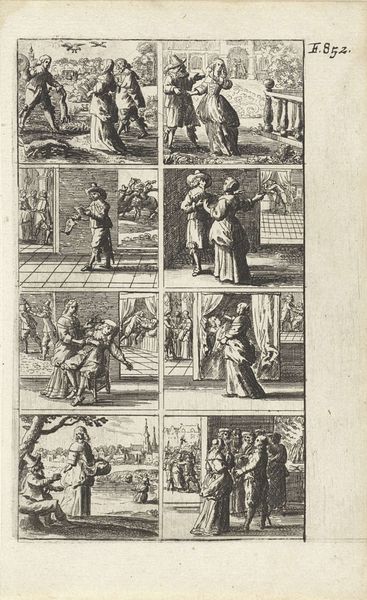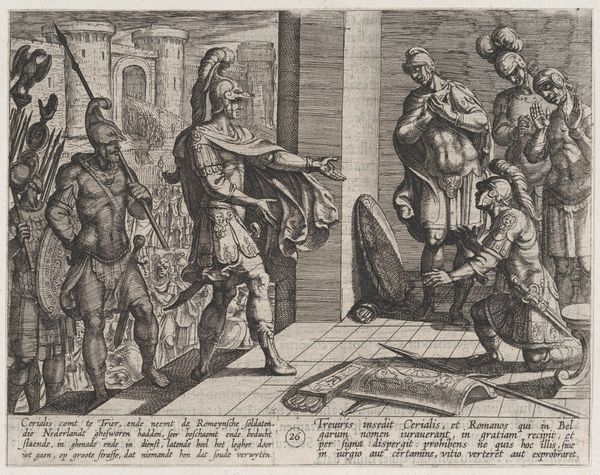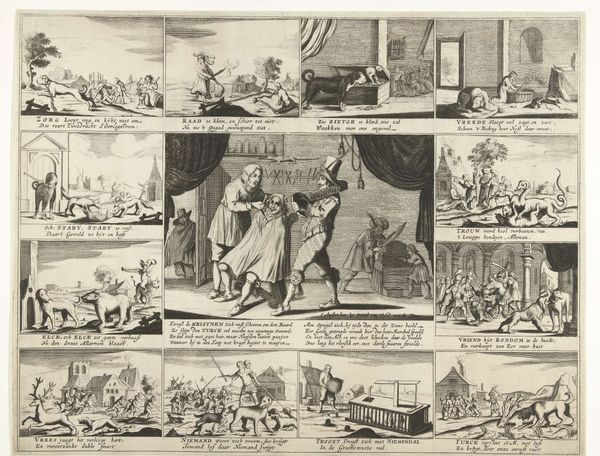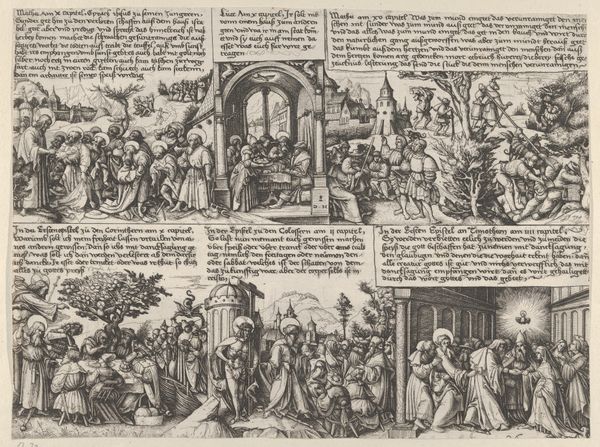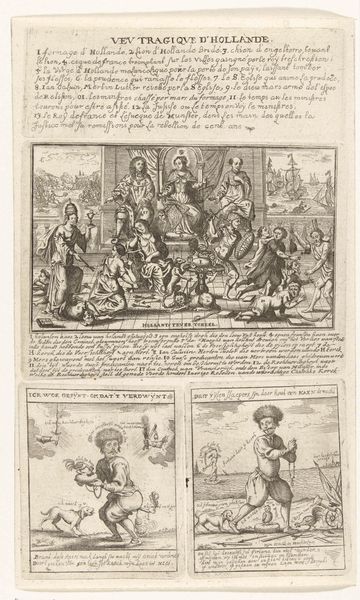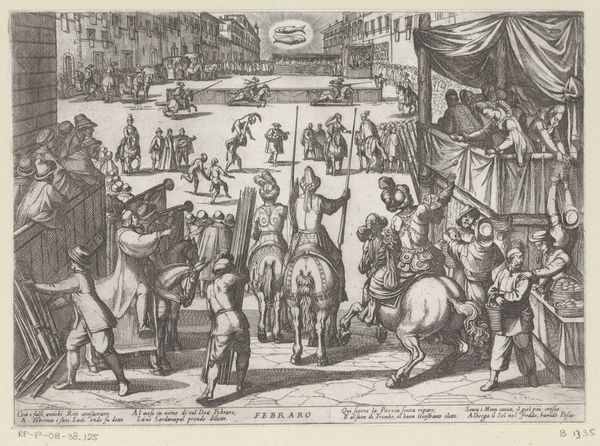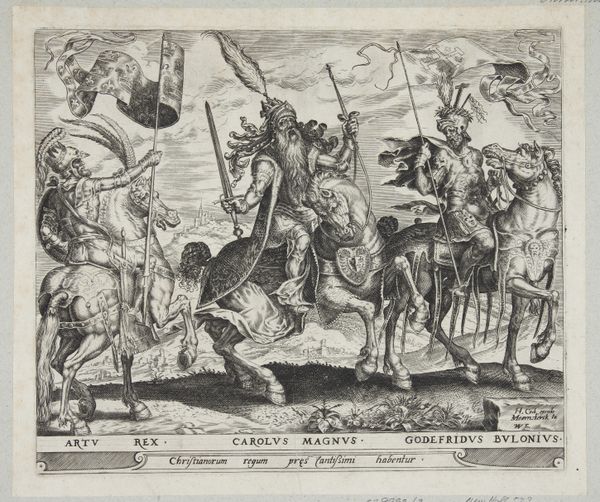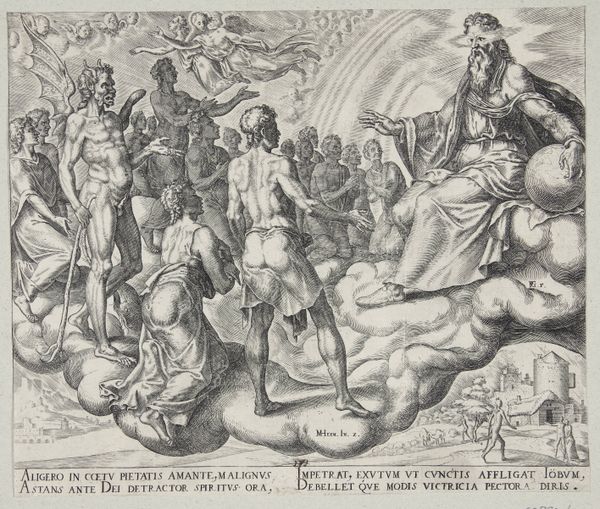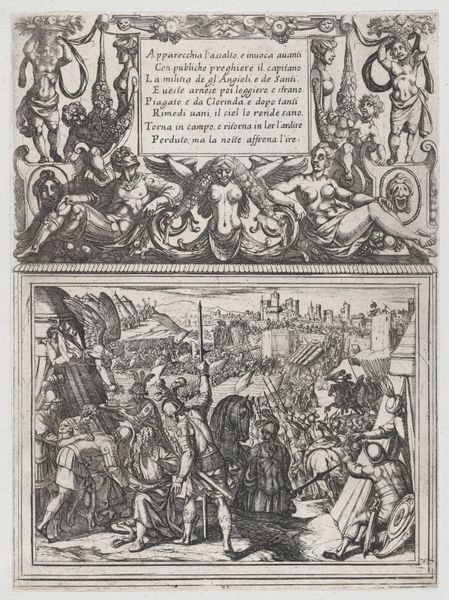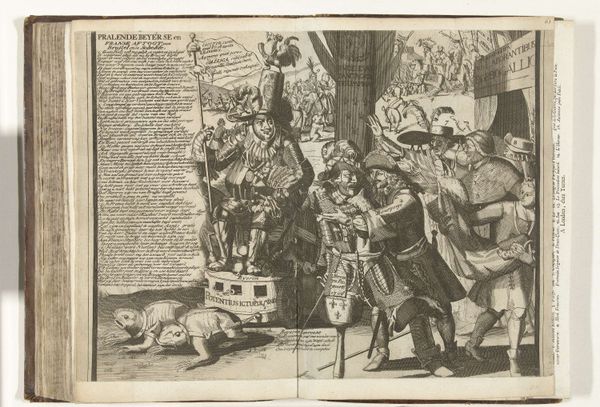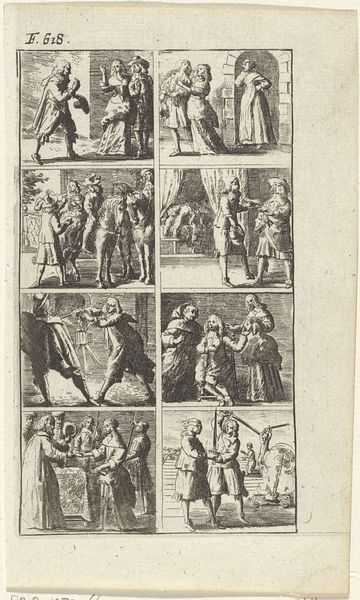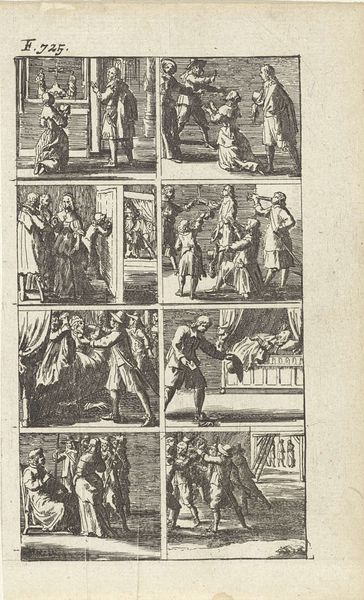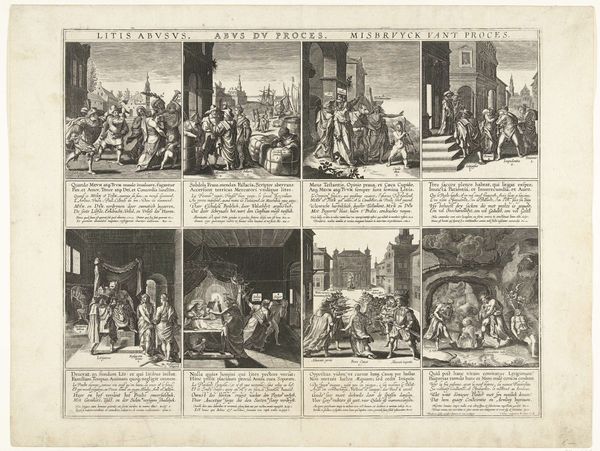
Dimensions: height 402 mm, width 458 mm
Copyright: Rijks Museum: Open Domain
Curator: Look closely at this print, “Spotprent op Oliver Cromwell,” dating from around 1653. It’s currently held in the Rijksmuseum. The artist is, at present, unknown to us. It’s an etching, teeming with detail. Editor: My first thought is "powerful condemnation." The composition is crowded, certainly, but it uses that visual noise to create an overall impression of injustice and upheaval. Justice on one side, Cromwell on the other, each presented through symbolism, drawing parallels and oppositions. Curator: Exactly! Consider Cromwell's figure – a regal facade, yet he clutches a helmet instead of wearing it. That subtly suggests usurped authority, a forced militaristic rule undermining legitimate sovereignty. He looms above scenes of alleged injustices authorized by his regime, almost like overseeing it all, no? Editor: Definitely! And opposite him, Justice isn’t merely blindfolded. She’s enthroned upon what seems to be a mangled figure, representing the oppressed. This suggests not just impartiality, but a world overturned, justice brutally extracted, and at great human cost. And, above her, a crown hovers, being bestowed by angels. Divine will, or claim of it? Curator: Probably the latter. Cromwell, even in the historical narratives, inspired very diverse public sentiments. Also, observe the miniature scenes surrounding the central figures. The scenes aren't there as decoration; they allude to specific acts deemed unjust, solidifying the overall accusatory message. Editor: Absolutely. It’s almost like a comic strip, with its multiple panels conveying a narrative, in this case, of the rise of Cromwell’s power at the expense of due process. It seems designed to stoke public sentiment against his leadership and remind them of former liberties. Curator: Given it’s a print, dissemination and propaganda were, without a doubt, intended. By circulating imagery of the man’s actions, and the allegory surrounding it, that sort of historical narrative is further driven into the mind. It served, and serves, as both record and powerful symbol. Editor: Precisely. Etchings like these provide an entry point into understanding both 17th-century artistic techniques and the visceral public sentiment during a turbulent historical era. Curator: Well said! This etching certainly reminds us how visual allegories shape not only our perceptions of events but history.
Comments
No comments
Be the first to comment and join the conversation on the ultimate creative platform.
